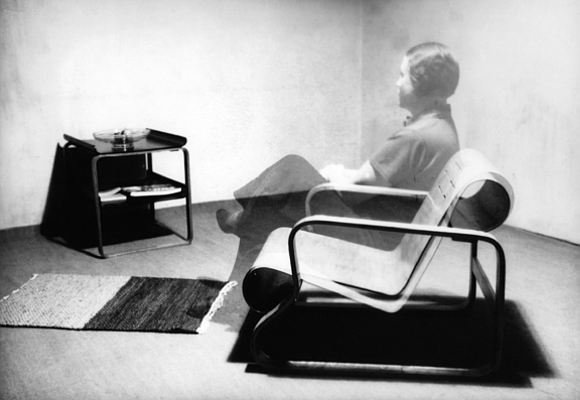Organic Architecture, Art and Design
The most comprehensive retrospective on Alvar Aalto, Finnish architect and designer ever held in Spain.
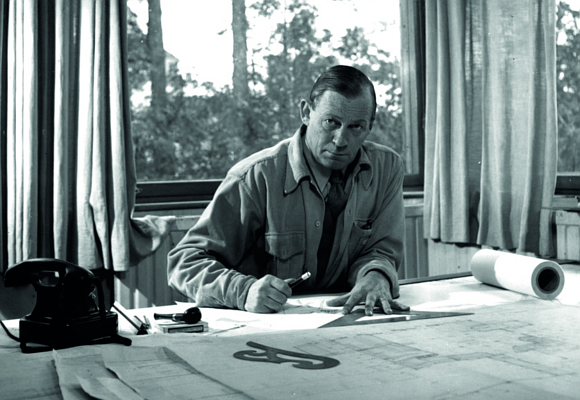
Alvar Aalto (1898–1976), who was called the “Magus of the North” by the architectural critic Sigfried Giedion, is the best known Finnish architects of his generation and one of the chief proponents of a human-centred modernism.
His buildings such as the Paimio Sanatorium (1933) for patients suffering from tuberculosis, and Villa Mairea (1939) embody a masterful interplay of organic volumes, forms and materials. Aalto’s Paimio Chair (1931–1932) and his Stool 60 (1933) were milestones in the development of modern furniture, and his emblematic Savoy Vase (1936) has become the symbol of Finnish Design.
The ”la Caixa” Foundation, together with the Vitra Design Museum (Weil am Rhein, Germany) and the Alvar Aalto Museum (Jyväskylä, Finland), presents the exhibition Alvar Aalto 1898-1976. Organic Architecture, Art and Design, a major retrospective of this legendary architect that takes a new look at his work and analyses how Aalto’s affinity for organic form was mediated by his close dialogue with many artists of his time, among them László Moholy- Nagy, Jean Arp, Alexander Calder and Fernand Léger, illustrated by a total of 350 exhibits, among them models, furniture, lamps, original drawings, period photographs and new images produced by Armin Linke. A new section of the exhibition has been added for its tour of Spain, detailing Aalto’s visits to our country in 1951.
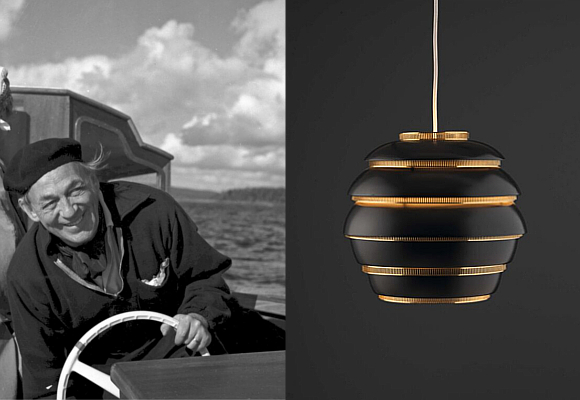
The show is part of the ”la Caixa” Foundation’s long-standing programme of exhibitions on architecture that not only showcases particular styles and periods of history but also offers visitors an overview that makes it possible to more fully understand the function of architecture in the world around us. The exhibitions programmed include shows on leading figures such as Mies van der Rohe, Le Corbusier, Andrea Palladio and Richard Rogers, and collective projects such as Building the Revolution. Art and Architecture in Russia 1915-1935 and Towers and Skyscrapers. From Babel to Dubai.
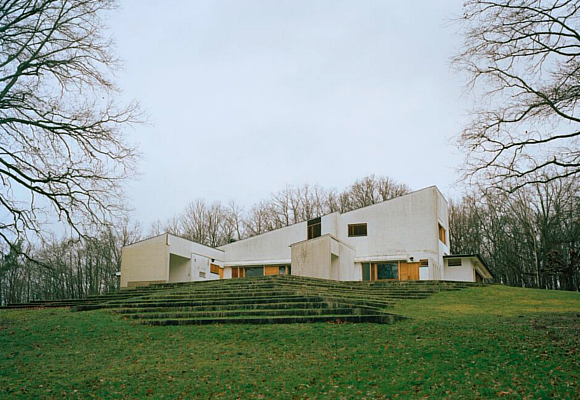
The exhibition includes Aalto’s most iconic buildings and designs, but also lesser-known projects that remained on paper. The display is complemented by the work of the German artist Armin Linke, who was commissioned to produce new photographs and film footage of particular buildings. Linke’s pieces appear throughout the exhibition, engaging in a dialogue with the period and archive material of the Vitra Design Museum and the Alvar Aalto Museum, as well as pieces from international lenders.
Alvar Aalto 1898-1976. Organic Architecture, Art and Design takes a new, more contemporary look at Aalto. Whereas previous exhibitions and publications have regarded Aalto’s organic architectural language as deriving directly from Finnish nature and landscape, the exhibition at CaixaForum Barcelona shows how Aalto’s affinity for organic form was mediated through a close dialogue with many artists of his time, such as László Moholy-Nagy, Jean Arp, Alexander Calder and Fernand Léger. Works by these and other artists are juxtaposed with Aalto’s designs and buildings in order to highlight his significance as a figurehead of the international art and architecture Avant-Garde from the 1920s onwards.
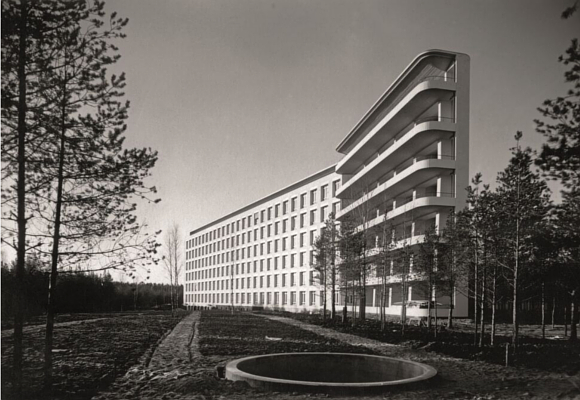
Aalto was the most important Finnish architect of his generation and a leading exponent of a human-centred modernism. His buildings such as the Paimio Sanatorium (1933) for patients suffering from tuberculosis, the Viipuri Library (Vyborg) and Villa Mairea (1939) embody a masterful organic interplay of volumes, forms and materials. Aalto become one of the most celebrated designers of the 20th century thanks to his plywood chairs, and his Savoy Vase has come to be regarded as the epitome of Finnish organic design.
Over a period of 50 years, Aalto designed around 500 buildings and projects, most of them in Finland, though almost a hundred are in 18 other countries. Among his projects are official buildings intended for cultural use, private houses and exhibition pavilions, as well as industrial premises, office blocks and terraced and prefabricated housing. Many of his buildings are Gesamtkunstwerke (total works of art), for which Aalto designed furnishings, lamps, fabrics and even building materials.
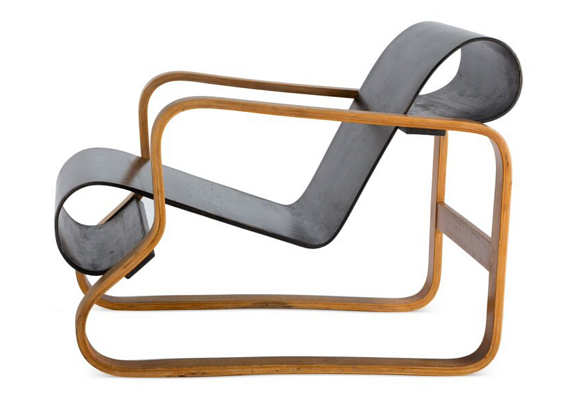
The cosmopolitan Aalto, who was keenly interested in cinema, film, photography and theatre, quoted Fernand Léger by calling himself an “orchestra conductor”, conducting all the arts to synthesize a harmonious, symphonic whole. He created living spaces that appear warm and organic, saturated with a masterful combination of volumes and building materials, terraced floors and ceilings, and a choreography of daylight and electric light. This approach is exemplified in projects such as his early Viipuri Library (1927-1935), but also in large-scale buildings such as the Wolfsburg Cultural Centre (1958-1962).
In 1935, Aalto founded Artek, conceived as both an international furniture company and as a gallery, with his wife Aino and two collaborators in order to produce and promote his own furniture designs. Artek immediately became a prestigious place for modern Avant-Garde culture and pursued – as Aalto put it – “mondial activities”. Artek’s growth reflected Aalto’s extensive international network, which also guaranteed him influence in social and political debates and led to commissions in countries such as Italy, Switzerland, France, Germany and the USA in the post-war period.
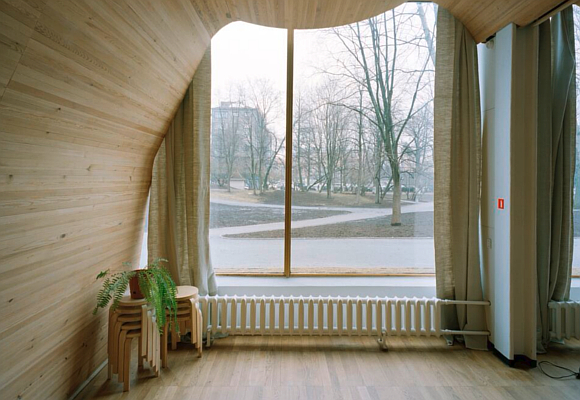
Aalto’s contact and exchanges with numerous members of the international Avant-garde played an important role, as they influenced his translation of natural forms into architecture and design. Forms inspired by nature interested him due to their potential for symbolic expression. He believed that nature served as a blueprint for and also strategically endorsed a particular creative approach, as well as a humanist worldview that sought to preserve individuality in a high-tech, mechanised society conditioned by economic constraints.
Aalto envisaged and designed projects in which people were the central element, which meant, in his opinion, taking the way we perceive our surroundings into account. The senses of sight and hearing, subtly guided by the choreography of the spaces and lighting, played a significant part in his projects, as did the tactile quality of the materials and of the surfaces. Consequently, for their residents or users, Aalto’s buildings became a kind of second nature.
Aalto created a diverse range of projects, such as standardised and prefabricated housing systems in Finland, an apartment block in the Interbau housing development in the Hansa quarter (now the Hansaviertel area) in Berlin, constructed for the International Building Exhibition in 1957.
His prolific output over the course of his career, spanning a period from the early 1920s to the 1970s, includes more than 400 buildings and dozens of pieces of furniture, glass objects and lamps, and culminated in largescale commissions such as the Finlandia Hall congress and concert venue in Helsinki, completed barely a year before he died, and the Essen Opera House, on which work finished in 1988, after his death. Aalto made two trips to Spain in 1951 to give talks in Barcelona and Madrid.
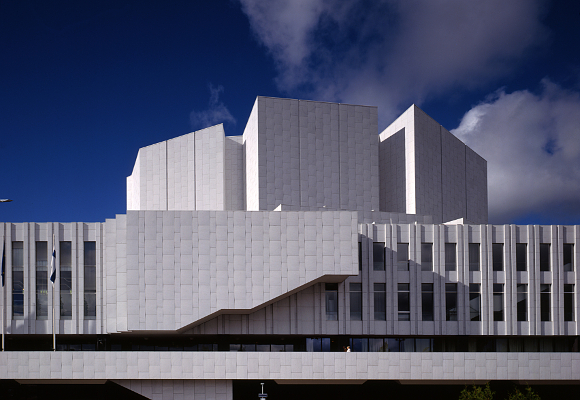
He saw Gaudí’s work and visited El Escorial, the symbol of Spain’s official architecture. On his return in November, he toured Andalusia and northern Morocco. While in Granada, he visited the Alhambra, which he described as “an architectural stimulus”. His contact with young architects in Spain was a crucial factor in the founding of the Grup R in Barcelona in 1951 and in the drafting of the Alhambra Manifesto in Madrid in 1953, which revived the spirit of the Modern Movement in Spain and propelled it into the future.

